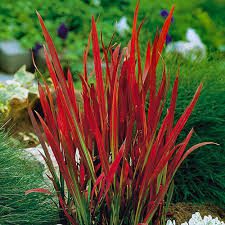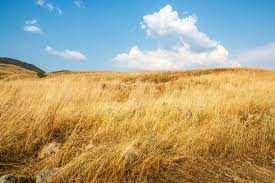Red Grass, scientifically known as Aristida longiseta, is a remarkable plant that captures attention with its striking appearance and ecological importance. This plant’s distinct feature is its vibrant red hue, which stands out against the backdrop of greenery. Despite its simple name, the complexities of its role in various ecosystems make it a noteworthy subject of study.
Found in regions with dry climates, Red Grass has evolved specific adaptations to thrive in harsh conditions. Its long, slender leaves are coated in fine hairs that help reduce water loss through evaporation, enabling it to survive in arid environments. These leaves also play a role in creating a unique reddish tint, giving the plant its iconic name.
One of the most intriguing aspects of Red Grass is its ecological significance. It forms an essential part of many ecosystems, providing food and habitat for various wildlife species. The seeds of Red Grass are a vital food source for birds and small mammals, aiding in their survival. Additionally, the grass’s ability to grow in low-nutrient soils assists in preventing erosion, stabilizing the soil, and maintaining the health of the ecosystem.
Beyond its ecological importance, Red Grass has also been used by humans in different ways. Some cultures have utilized its fibers for crafting items like baskets and mats. Its adaptability to arid conditions also makes it useful for controlling soil erosion, which is crucial in regions prone to desertification.
In addition, Red Grass (Aristida longiseta) is more than just a striking plant with a distinct red color. Its ability to thrive in challenging environments, support wildlife, and contribute to soil health showcases its significance in various ecosystems. As we continue to understand and appreciate the role of this plant, we gain valuable insights into the delicate balance of nature and the ways in which species interact to sustain life on our planet.
Read Also: A Guide to Growing and Caring for Deschampsia Cespitosa (Tufted Hairgrass)
Growing and Care Guide of Red Grass

Red Grass (Aristida longiseta) is a fascinating plant that can add a unique touch to your garden or landscape. Growing and caring for this distinctive grass requires some attention to detail, but the results can be rewarding. Here’s a simple guide to help you cultivate and nurture Red Grass:
1. Location: Choose a sunny spot in your garden where the Red Grass can receive at least 6 to 8 hours of direct sunlight daily. This grass thrives in areas with dry climates and well-draining soil.
2. Soil: Red Grass prefers soil that is well-draining and slightly sandy. You can improve soil drainage by adding organic matter such as compost. Avoid soils that retain too much moisture, as this can lead to root rot.
3. Planting: Plant Red Grass seeds directly in the soil during the early spring or fall. Gently scatter the seeds over the prepared soil and lightly press them into the ground. Keep in mind that Red Grass doesn’t require excessive watering during germination.
4. Watering: Once established, Red Grass is relatively drought-tolerant. Water the grass sparingly, allowing the soil to dry out between waterings. Overwatering can lead to root problems and negatively impact the plant’s growth.
5. Maintenance: Red Grass doesn’t need much maintenance. Trim back any dead or faded growth in late winter or early spring to encourage new growth. You can also remove any unwanted grass or weeds that might compete for resources.
6. Pruning: Prune Red Grass by cutting back dead foliage and spent flower stalks. This not only keeps the plant looking tidy but also encourages new growth.
7. Propagation: Red Grass can be propagated by collecting seeds from mature plants. Allow the seeds to dry on the plant before harvesting. Store the seeds in a cool, dry place until you’re ready to plant them.
8. Wildlife Habitat: If you’re interested in creating a wildlife-friendly garden, Red Grass can attract birds and small mammals with its seeds. Leaving the plant’s seed heads can provide a valuable food source for local wildlife.
9. Erosion Control: Consider planting Red Grass on slopes or areas prone to erosion. Its deep roots and ability to thrive in poor soil make it an excellent choice for stabilizing the soil and preventing erosion.
Remember that every environment is unique, so observing your Red Grass and adjusting care as needed will help ensure its successful growth. With proper attention to sunlight, soil, and water, you can enjoy the beauty and ecological benefits that Red Grass brings to your outdoor space.
Yellow Grass

Yellow Grass is a type of grass that has a special color – it’s yellow! When you look at a field or a lawn covered in yellow grass, it’s quite a sight. This grass stands out because most grass is green.
The color of the grass can turn yellow for a few reasons. One reason is when the weather is very hot and there isn’t enough rain. Just like people, plants need water to stay healthy and green. When they don’t get enough water, their leaves can start to change color. Another reason for yellow grass might be a lack of nutrients in the soil.
It’s important to take care of yellow grass to help it turn green again. Watering the grass regularly can help it bounce back to its healthy color. Also, adding special nutrients to the soil can give the grass the food it needs to grow strong and green.
Yellow Grass might not be the usual color we expect, but it can still be a part of a beautiful landscape. It’s a reminder that nature sometimes needs a little help from us to stay vibrant and lively.
Purple Grass

Purple Grass is a type of grass that has a unique and interesting color – it’s purple! Unlike most grass that we see, which is usually green, purple grass stands out because of its vibrant and unusual hue.
The color of purple grass can catch your eye and add a touch of beauty to any landscape. Just like green grass, purple grass also needs sunlight and water to grow. It’s a special kind of grass that can thrive in certain conditions and create a captivating visual effect.
Purple grass can sometimes be found in gardens, parks, or even in the wild. People might choose to plant purple grass to add a pop of color to their outdoor spaces. Taking care of purple grass involves providing it with the right amount of water, sunlight, and nutrients to keep it healthy and looking its best.
So, if you ever come across purple grass, take a moment to appreciate its uniqueness and the way it adds a splash of purple to the world of green.
Purple Love Grass
Purple Love Grass, scientifically known as Eragrostis spectabilis, is a beautiful type of grass that is named for its charming purplish hue. This grass is native to North America and can often be found growing in fields, meadows, and along roadsides.
The name “Purple Love Grass” is quite fitting because of the romantic connotation associated with it. When this grass flowers in late summer or early fall, it produces delicate, airy flower clusters that have a purple tint. These flowers sway in the wind and create a dreamy, romantic atmosphere.
Purple Love Grass is not only visually appealing but also ecologically important. It provides food and habitat for various wildlife, including birds and insects. It’s often used in landscaping to add texture and color to gardens, and it can also help with soil erosion control.
To enjoy Purple Love Grass, one can plant it in areas with well-drained soil and plenty of sunlight. With its distinctive color and romantic charm, Purple Love Grass adds a touch of natural beauty that can be admired and loved by all.
Read Also: All You Need To Know About Couch Grass (Elymus Repens)
Uses of Purple Love Grass
Purple Love Grass (Eragrostis spectabilis) has several practical and aesthetic uses:
1. Landscaping: Purple Love Grass is often used in landscaping to add a pop of color and visual interest to gardens, parks, and outdoor spaces. Its unique purple hue sets it apart from traditional green grass, making it a great choice for creating eye-catching landscapes.
2. Erosion Control: The dense root system of Purple Love Grass helps prevent soil erosion. It can be planted on slopes or areas prone to erosion to stabilize the soil and reduce the risk of runoff.
3. Wildlife Habitat: The grass provides habitat and food for various wildlife, including birds, insects, and small mammals. Birds often use the grass for nesting, and insects are attracted to the flowers for nectar and pollen.
4. Educational Purposes: Purple Love Grass can be used in educational settings to teach students about native plant species, ecology, and the importance of biodiversity.
5. Dried Flower Arrangements: The delicate and airy flower clusters of Purple Love Grass can be harvested and used in dried flower arrangements. Their unique color and texture add a rustic and natural element to floral displays.
6. Revegetation Projects: Purple Love Grass can be included in habitat restoration and revegetation projects to reintroduce native plant species to areas that have been disturbed by construction or other human activities.
7. Economic Benefits: In some regions, Purple Love Grass is used as forage for livestock, providing a source of food for grazing animals.
8. Aesthetics: Beyond its functional uses, Purple Love Grass adds beauty to natural landscapes. Its graceful appearance and distinctive color make it a favorite among those who appreciate the charm of native grasses.
Whether for practical purposes like erosion control or for its aesthetic value in landscaping, Purple Love Grass serves multiple functions, contributing to both the environment and human enjoyment.
Read Also: Recycling Challenges: Strategies for Success
